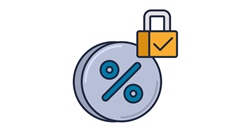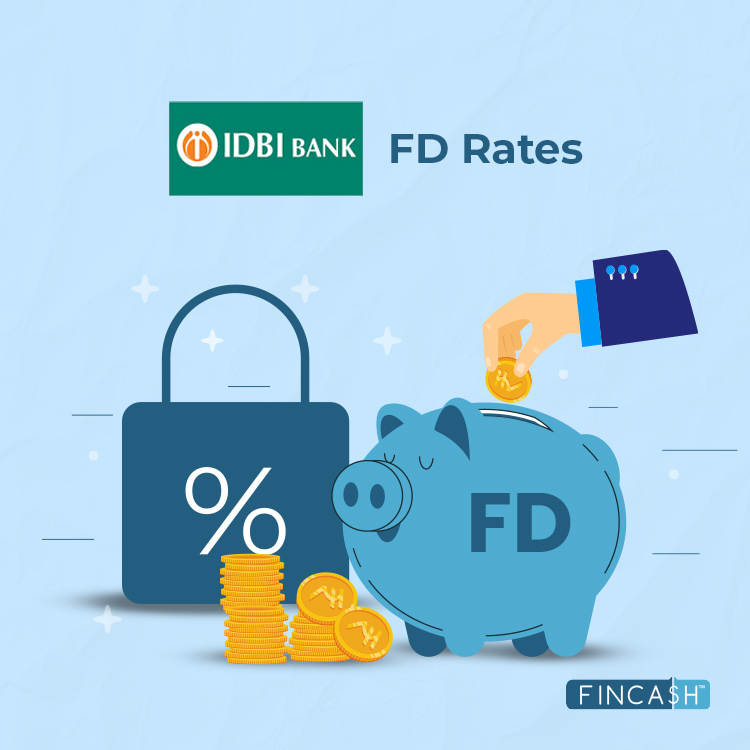What is a Fixed-Rate Mortgage?
A house loan with a Fixed Interest Rate for the whole duration is referred to as a "Fixed-Rate Mortgage."

It specifies that a mortgage has a fixed interest rate from start to finish. Fixed-rate mortgages are prevalent among people wanting to know what they'll have to pay each month.
How does a Fixed Rate Mortgage Work?
There are several types of mortgage products on the Market, but they may be divided into two categories: fixed-rate loans and variable-rate loans. Variable-rate loans have a rate of interest set above a specified benchmark and then swing over time, altering at different times.
In contrast, fixed-rate mortgages have a constant interest rate for the whole duration of the loan. Fixed-rate mortgages, unlike adjustable and variable rate mortgages, do not change with the market. As a result, regardless of where interest rates go—up or down—the interest rate on a fixed-rate mortgage remains constant.
Most people who buy a house for the long term choose a fixed-rate mortgage to lock in an interest rate. In addition, they prefer these mortgage products since they are more predictable. Thus, the borrowers know what they'll have to pay each month so that there are no surprises.
Calculating the Fixed Rate Mortgage Cost
With fixed-rate mortgages, the number of interest borrowers pay can fluctuate depending on the duration for which the loan gets amortized (for how long the payments are spread out). So even though the interest rate on your mortgage and the number of your monthly payments remain the same, the method your money is spent changes. In the early repayment phases, mortgagors pay even further towards interest; later, their payments go more toward the loan principal.
As a result, while calculating mortgage costs, the mortgage length is taken into account. The general rule signifies that the longer the term, the more interest you will have to pay. So like, a 15-year fixed-rate mortgage will cost less in interest than a 30-year fixed-rate mortgage. It's easier to use a mortgage calculator to figure out how much a given fixed-rate mortgage costs—or to compare two different mortgages—than it is to crunch the numbers.
If you enjoy working with numbers, here is a standard formula for manually calculating your monthly mortgage payment:
M = (P*(I * (1+i)^n)) / ((1+i)^n-1) Here, M - Payments monthly P – Loan’s principal amount i – Interest rate monthly n – Months required for loan repayment
Talk to our investment specialist
Differences between Fixed Rate Mortgages and Adjustable Rate Mortgages
Adjustable-rate mortgages (ARMs), which include both fixed and variable rates, are often offered as an amortized loan with consistent instalment payments over the loan's life. They demand a fixed interest rate for the first few years of the loan, then variable rates beyond that. Because the rates for a portion of the loan are variable, amortization schedules for these loans might be slightly more complicated. As a result, investors can expect varying payment amounts rather than the steady payments associated with a fixed-rate loan.
People who don't mind the uncertainty of rising and falling interest rates tend to prefer ARMs. Borrowers who know they'll refinance or won't own the property for a long time are more likely to choose ARMs. Typically, these borrowers bet on interest rates falling in the future. If interest rates decline, a borrower's interest will decrease over time.
Benefits and Drawbacks of Fixed-Rate Mortgage
Fixed-rate mortgage loans come with a variety of hazards for both borrowers and lenders. The interest rate environment is frequently the source of these dangers. A fixed-rate mortgage has a lesser risk for the borrower and a higher risk when interest rates rise.
Borrowers often want to lock in cheaper interest rates to save money over time. As a result, when interest rates rise, a borrower's payment remains lower than the current market situation. A lending Bank, in contrast, is not benefiting as much as it could from the current higher interest rates because it is renouncing revenues from issuing fixed-rate mortgages that, in a variable-rate environment, could yield higher Income over time.
In a market when interest rates are declining, the converse is true. Borrowers tend to pay more on their mortgage than the market dictates. As a result, lenders are making more money on fixed-rate mortgages than they would if they issued fixed-rate mortgages now. Borrowers can also refinance their fixed-rate mortgages at current rates if those rates are lower, but they will incur high costs.
All efforts have been made to ensure the information provided here is accurate. However, no guarantees are made regarding correctness of data. Please verify with scheme information document before making any investment.
You Might Also Like











